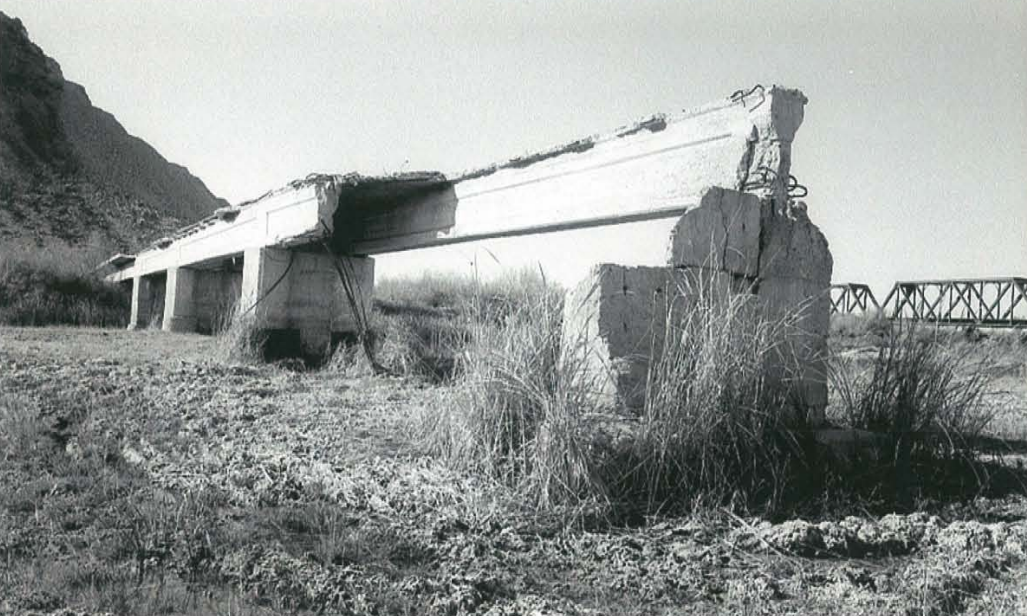The triumph and folly of Antelope Bridge
The triumph and folly of Antelope Bridge

It's a mere memory now, but there was a time when Antelope Bridge was one of the most important bridges over the Gila River.
Nestled at the foot of Antelope Hill near Tacna, Antelope Bridge was a vital part of the Ocean-to-Ocean Highway across southern Arizona. The site was first surveyed in 1912 with an original design of 15 girder spans supported by massive bullnosed concrete piers. The bridge's overall length was almost 1000 feet, not including the timber trestle approaches on the ends.
The state began construction in 1913 using prison labor. When it became apparent that would not suffice to get the job done, the original engineer redesigned the project and requested bids. But fate seemed to be against the project. The original builder badly underestimated what was needed to erect such a structure and defaulted. Not long after, Gila River floods damaged the partially completed bridge. The state pushed on with more prison labor, and in 1915 the bridge opened with a gala picnic and thousands of well-wishers.
All the excitement in the world, however, couldn't overcome one vital fact: The site was a poor selection. Antelope Bridge suffered extensive damage with almost every major flood on the Gila. After years of repeated reconstruction of the concrete bridge and timber pile approach trestles, the bridge was replaced in 1929 by the now-abandoned McPhaul Bridge.
Antelope Bridge is in ruins today, but it was a major crossing on a nationally important transcontinental route. It's also significant in state history as one of the few structures remaining from the early state period built using prison labor.
